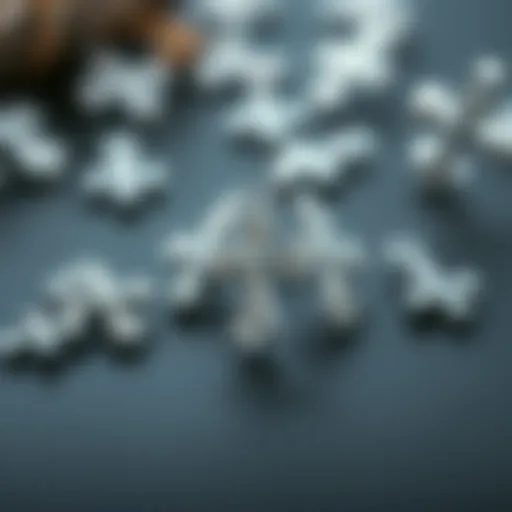The Versatile Use of Waterproof Lace Tape in Fashion
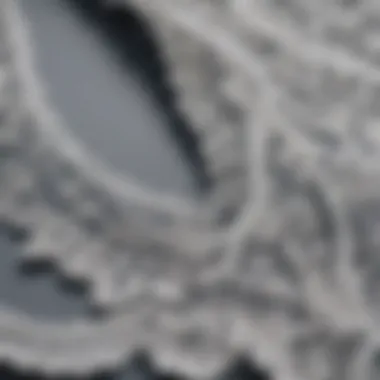

Intro
Waterproof lace tape, often pushed to the sidelines of fashion materials, has emerged as a surprising game-changer in the industry. This innovative material embodies not just utility but adds an aesthetic touch to garments and accessories alike. Designers are increasingly recognizing its potential to elevate simple pieces into fashionable statements. With a keen understanding of its characteristics, methods of application, and maintenance practices, one can grasp the true versatility of waterproof lace tape in modern design.
Fashion Trends
Current Trends in Clothing
In the contemporary fashion scene, versatility reigns supreme. Designers are crafting garments that can transition smoothly from day to night, and waterproof lace tape plays a crucial role in this evolution. Many labels are incorporating lace tape into their collections to achieve a delicate yet robust finish. For instance, a stylish raincoat can be adorned with waterproof lace tape along its seams, providing both integrity and flair.
Additionally, streetwear is getting a chic upgrade. Imagine oversized hoodies trimmed with lace tape that catches the eye without sacrificing comfort. This blend of function and style is a hallmark of the current trend, appealing to a demographic that values practicality as much as aesthetics.
"Lace tape isn’t just for show; it’s utility meets elegance, a newfound balance that modern designs crave."
Seasonal Attire Suggestions
As seasons change, so too does the application of waterproof lace tape within wardrobes. During the spring, light jackets with lace accents can enhance floral prints, adding a layered texture that is both striking and cohesive. For summer, lightweight swimsuits embellished with lace tape serve dual purposes—fashionable and functional, offering durability in watery environments.
As we move into fall, lace tape can be used creatively with layered looks. A woolen scarf edged with waterproof lace tape adds warmth while showcasing intricate designs. And when winter rolls around, consider lace tape on puffer coats, providing a touch of femininity to typically bulky designs without compromising thermal efficiency.
Style Tips
How to Mix and Match Outfits
Mixing and matching outfits can often feel like a puzzle, but incorporating waterproof lace tape simplifies this task. Use it as a unifying element across various pieces in your wardrobe. For example, pairing a lace taped tank top with a high-waisted skirt creates a seamless blend of casual and chic, perfect for any outing. Consider also incorporating color-matched lace tape accents on shoes or bags, ensuring a cohesive look that’s stylish and adaptable.
Essential Wardrobe Staples
To fully leverage the potential of waterproof lace tape, certain wardrobe staples are must-haves:
- Classic T-shirt: A simple tee with lace tape trim can quickly elevate your everyday look.
- Pencil Skirt: Lace tape detailing will add femininity to a typically structured piece.
- Lightweight Outerwear: Jackets with lace tape accents are functional and fashionable, perfect for unpredictable weather.
- Accents for Accessories: Adding lace tape to scarves or hats provides a subtle infusion of style.
In a nutshell, waterproof lace tape is changing the face of fashion design by merging functionality with creativity. Its adaptability allows it to fit into a wide array of styles and occasions, ensuring it remains a staple in both everyday wear and high-end fashion.
Prologue to Waterproof Lace Tape
Waterproof lace tape is more than just a decorative element in the world of fashion; it represents the intersection of functionality and style. As fashion evolves, the materials used reflect not only aesthetic values but also practical considerations. This versatility makes waterproof lace tape an essential component in various designs, from haute couture to everyday wear.
The introduction of waterproof lace tape has opened doors for designers seeking to blend creativity with resilience. Traditional lace, while beautiful, often has limitations regarding durability and usability in different environments. Therefore, the emergence of waterproof options has empowered designers to make garments that are not only visually appealing but also suitable for diverse conditions. As we explore the facets of this innovative material, we will understand its significance in enhancing garment longevity, increasing stylistic options, and catering to a modern audience that values both flair and function.
Definition and Characteristics
Waterproof lace tape is defined by its unique ability to repel water while maintaining aesthetic appeal. This is achieved through specialized materials and coatings that ensure the lace retains its character without sacrificing functionality. Some key characteristics include:
- Water Repellency: As the name suggests, it resists water penetration, making it ideal for applications in various climates.
- Flexibility: It is designed to move with the fabric, ensuring comfort without compromising the integrity of the garment.
- Variety: Available in a range of patterns, colors, and widths, it allows designers to explore limitless creative avenues.
Historical Context
The evolution of lace dates back centuries, originally crafted from delicate threads by skilled artisans. However, its delicate nature often meant limited usability in practical fashion. The introduction of waterproof lace tape marks a pivotal change in how lace can be utilized. In recent years, a focus on weather-resilient materials has gained momentum, influenced by both consumer demand and technological advancements in textile manufacturing. Today, waterproof lace tape serves not only as a nostalgic nod to timeless craftsmanship but also as an embodiment of modern design principles that prioritize durability and sophistication.
Materials Used in Production
The production of waterproof lace tape typically involves a blend of high-performance synthetic fibers, providing both strength and elasticity. Commonly used materials include:
- Polyester: Known for its resilience and water resistance, polyester forms the backbone of many lace tapes.
- Nylon: This material adds durability and enhances the stretch parameters of the tape.
- Coatings: Special finishes, often derived from polyurethane or silicone, are applied to grant the water-repelling properties.
The combination of these materials results in a product that not only stands the test of time but also meets the demands of contemporary garment design. Thus, its versatility becomes evident, allowing use in everything from swimwear to upscale evening wear.
Applications in Fashion Design
In the realm of fashion design, the integration of innovative materials can drastically change the game. One such material is waterproof lace tape, which stands out due to its unique combination of functionality and aesthetic appeal. It offers designers a versatile tool that can enhance their creations while addressing practical concerns such as durability and adaptability to various weather conditions. The importance of understanding its applications extends beyond mere embellishment—it represents a shift towards more practical, yet stylish, fashion solutions.
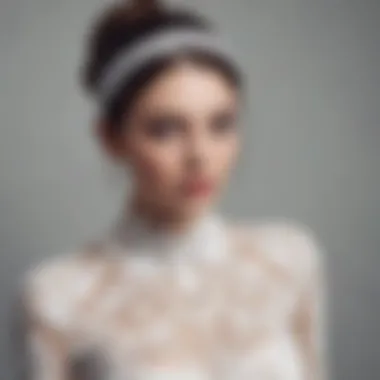

Structural Uses in Garments
Waterproof lace tape serves not just as a decoration; it’s an important structural component in garments. Designers utilize it for reinforcement along seams, especially in outerwear intended for wet conditions. The tape binds edges of fabric together firmly, minimizing fraying and adding strength without bulky seam allowances. This is particularly beneficial in jackets and activewear where mobility is key.
For example, consider the construction of a rain jacket. Instead of traditional sewing methods, applying waterproof lace tape can create sealed seams that prevent water penetration, effectively marrying function with fashion. With elements like stretch and recovery properties, lace tapes can be manipulated to allow for ease of movement, making garments not just waterproof but also comfortable to wear.
Decorative Applications
The decorative potential of waterproof lace tape is truly where its versatility shines. Designers are increasingly choosing lace tape as a fashionable accent to elevate their work. Picture a sleek black dress adorned with intricate lace tape designs lending an ethereal quality, juxtaposing elegance with a touch of outdoor practicality. It can be used in various forms such as borders, appliqués, or even layered to create depth and texture.
Additionally, the design possibilities are endless with the introduction of colors and patterns. This opens avenues for creativity, allowing designers to craft bespoke pieces that speak to individual artistic visions. As more fashion runways showcase collections featuring this unique element, it’s clear that the decorative use of waterproof lace tape is forging a new pathway in design approaches.
Layering Techniques with Lace Tape
Layering is a fundamental technique in fashion, and waterproof lace tape provides an exciting way to explore it. By integrating lace tape between layers of fabric, designers can achieve varied visual effects while also enhancing the garment’s waterproof features. The sheer quality of lace tape allows for delicate layering without adding excessive bulk, making it a favored choice for creating intricate styles.
Consider creating a multi-layered skirt where the waterproof lace tape serves as a subtle peek-a-boo element, revealing hidden textures while maintaining function. Alternatively, it can be implemented in sportswear to merge style with sweat-resistant qualities, allowing wearers the freedom to move with confidence. Techniques like these breathe new life into traditional layering, turning garments into dynamic canvases of creativity.
"In using waterproof lace tape, fashion designers are not just redefining aesthetics but refashioning the very structure of wearables."
This intersection of function and design highlights the innovative spirit of modern fashion, and as a result, the applications of waterproof lace tape are continually expanding, shaping the future of the industry.
The Advantages of Waterproof Lace Tape
Waterproof lace tape is quickly becoming a staple in the fashion design landscape. Its versatility allows designers to merge functionality with aesthetic appeal, making it a go-to material for both practical and stylish designs. Let’s explore the key advantages that set waterproof lace tape apart from traditional materials, delving into its durability, water resistance, and lightweight comfort.
Durability and Longevity
When fashion designers consider materials, durability often comes first. Waterproof lace tape exhibits remarkable resistance to wear and tear, which is paramount in clothing that may be exposed to rough environments or regular use. For instance, garments like outdoor jackets or swimwear that require frequent washings can benefit immensely from this material.
Unlike standard fabric trims, waterproof lace tape maintains its integrity despite the rigors of daily wear. Designers have noted that items utilizing this tape don’t lose their aesthetic appeal over time; they resist fraying, fading, or breaking down. The fibers used in production create a robust structure that contributes to the overall lifespan of the garment.
"A well-designed piece incorporating waterproof lace tape doesn’t just look good—it lasts. Fashion buyers are drawn to items that offer both style and resilience."
Water Resistance Benefits
One of the standout features of waterproof lace tape is its inherent water-resistant quality. This characteristic is pivotal for fashion items intended for diverse climates, allowing garments to remain functional in wet conditions without compromising on style. Consider a chic raincoat adorned with delicate lace tape; it’s functional because it repels moisture and fashionable because it adds a touch of elegance.
Moreover, this material caters well to the growing trend of activewear. Athletes and fitness enthusiasts are increasingly seeking apparel that can withstand elements while ensuring comfort. Waterproof lace tape offers the perfect blend, keeping garments stylishly intact even when faced with moisture or perspiration. This leads to broader functionality without sacrificing visual appeal.
Lightweight and Comfort Considerations
Weight plays a significant role in garment comfort. Waterproof lace tape is surprisingly lightweight, allowing designers to create layers without adding unnecessary bulk. This aspect is essential, especially in fashion that involves layering techniques where multiple materials are used. The result is a lightweight feel that doesn’t compromise on style or warmth.
Another point to ponder is how this tape molds to the fabric seamlessly. When sewn or adhered correctly, it enhances the wearer's comfort by ensuring the garment moves effortlessly with the body. Styles that combine lace tape with natural fabrics can achieve a soft, breathable result, making garments more pleasant to wear throughout the day.
Popular Uses Among Fashion Designers
The landscape of fashion is ever-evolving, often driven by fresh ideas and innovative materials. Waterproof lace tape has rapidly gained traction among designers, not only for its practical applications but also for its aesthetic appeal. This material is redefining how garments are constructed and styled, merging practicality with high fashion.
Commercial Fashion Trends
In the realm of commercial fashion, trends come and go, yet waterproof lace tape remains a steadfast player. Designers are increasingly using this material to create garments that are not only visually appealing but also functional. For instance, brands have embraced lace tape in their sportswear lines, allowing for breathability while maintaining water resistance.
- Athleisure: Waterproof lace tape enhances leggings and jackets, giving them a unique flair while serving practical needs.
- Eco-Friendly Lines: Many fashion houses are now producing sustainable collections that utilize lace tape made from recycled materials, appealing to environmentally conscious consumers.
The adaptability of this tape aligns perfectly with current trends that prioritize both style and substance. Garments can be enhanced with lace taping techniques that add depth and complexity without excessive bulk. As more designers recognize its benefits, it's likely to become a staple in mainstream collections.
Custom Designs in Haute Couture
When it comes to haute couture, the stakes are even higher. This is where creativity meets craftsmanship, and waterproof lace tape steps into the limelight with flair. Designers often experiment with intricate layering, and lace tape provides the structural integrity necessary for high-end, delicately crafted pieces.
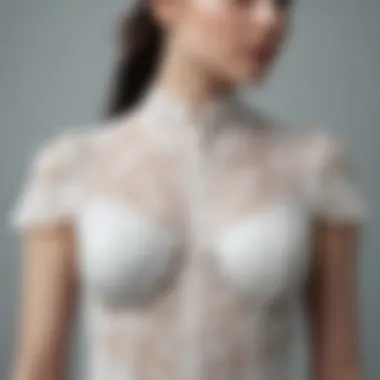

Consider the innovative techniques being applied:
- Elaborate Gowns: Designers weave lace tape into the seams of evening gowns, ensuring they hold shape while allowing for expansive design models.
- Bespoke Accessories: High-end handbags and shoes frequently employ lace tape as a decorative element, amalgamating style with performance.
"The true artistry in fashion lies in the unexpected. Waterproof lace tape ensures that high elegance and practicality coexist seamlessly."
In this sphere, functionality does not overshadow beauty; instead, it enhances it. Custom designs leverage waterproof lace tape to push the boundaries of modern elegance, opening new avenues for artistic expression.
DIY Fashion Projects
The emergence of DIY culture has also reignited interest in waterproof lace tape among hobbyists and aspiring designers. This material offers a unique opportunity for individuals to explore their creativity without the constraints of traditional garments.
Here are some easy yet impactful DIY projects that showcase the versatility of lace tape:
- Personalized Rain Gear: A simple rain jacket transformed with lace tape adds style to functionality, making it both chic and practical.
- Home Decor Fashion: Waterproof lace tape can be utilized in creating fashion-forward home items, such as cushion covers or table runners that are resistant to spills.
- Accessories: Crafting jewelry with lace tape introduces a fresh element to DIY fashion, enabling users to create unique pieces that stand out.
By employing waterproof lace tape creatively, individuals tap into a world of possibilities where they can convey their style while enjoying the benefits this unique material brings.
In summary, waterproof lace tape's rise to fame among fashion designers exemplifies an interesting intersection of function and fashion. Its application ranges from impressive haute couture designs to trending commercial collections, right down to the exciting realm of DIY projects. Each of these uses unveils its inherent versatility, cementing its place as a game-changer in the industry.
Technical Aspects of Waterproof Lace Tape
In the realm of fashion design, understanding the technical aspects of waterproof lace tape is crucial. These elements dictate not only the functional capabilities of the tape but also its performance and aesthetics in various applications. As trends evolve and designers push creative boundaries, knowledge of these specifics becomes increasingly relevant and vital for innovation and longevity in fashion products.
Adhesive Properties and Bonding Techniques
When selecting waterproof lace tape, the adhesive properties are often the first technical aspect to consider. The strength and durability of the adhesive determine how well the tape will hold up under stress, particularly when it comes to movement in garments. A high-quality adhesive should bond tightly with fabric but also allow flexibility to maintain the garment's comfort and fit.
Moreover, the bonding techniques used during application can influence the final product greatly. Designers often utilize methods such as heat bonding, pressure application, and stitching techniques.
- Heat Bonding: This technique involves applying heat to activate the tape's adhesive, ensuring a strong bond that remains durable over time. It is often favored for intricate designs and where precision is paramount.
- Pressure Application: In many cases, simply pressing the tape onto the fabric can create a lasting bond, suitable for both quick projects and artistic adaptations.
- Stitching: For added security and design flair, some designers choose to stitch over the lace tape. This not only reinforces the bond but also adds to the aesthetic appeal.
"The effectiveness of waterproof lace tape doesn't solely rely on the tape itself but rather the method of application, making technique just as important as materials."
Compatibility with Different Fabrics
Not all tapes are created equal, and compatibility varies depending on the fabric used. For instance, a tape that works well with denim may not adhere properly to silk. Designers must consider the fiber content and texture of their materials when choosing the appropriate waterproof lace tape. Different fabrics can pose unique challenges:
- Natural Fibers: When dealing with materials like cotton or linen, the tape needs to adhere firmly. These fibers can repel adhesives due to their composition and treatment.
- Synthetic Fabrics: These materials often create a smoother surface, allowing for easier adhesion. However, selecting the right tape that can withstand the synthetic fiber's characteristics is key to maintenance and wear.
- Stretchable Fabrics: Styles involving spandex or lycra require a more flexible tape to avoid ripping or compromising the garment's elasticity. Tapes with a high elongation factor are ideal in this scenario.
Understanding these compatibilities helps designers make informed decisions that can prevent future wear and tear, ensuring designs remain intact throughout their lifecycle.
Testing for Quality Assurance
Before any commercial launch, testing is an essential procedure that cannot be skipped. Quality assurance of waterproof lace tape involves several steps:
- Adhesion Tests: Evaluating the strength of the bond under various conditions ensures that the tape will hold up during wear.
- Water Resistance Evaluation: As a waterproof product, the tape must be tested against various moisture levels to confirm performance.
- Durability Tests: Subjecting the tape to repeated stress scenarios, like stretching and abrasion, can predict its longevity in the real world.
Incorporating rigorous testing protocols ensures that the final product meets both the designer's and consumer's expectations. By doing so, brands can stand confidently behind their offerings, knowing that the waterproof lace tape they’re using will deliver as promised.
With these technical insights into waterproof lace tape, designers can harness its potential, ensuring that their creations stand out in not just style but also in functionality.
Maintenance and Care for Waterproof Lace Tape
Taking care of waterproof lace tape ensures it serves its purpose effectively while maintaining its aesthetic appeal. Proper maintenance can prolong the life of the tape and help it stay in prime condition, which is especially crucial for designers and enthusiasts alike. This section discusses why maintenance matters, how to clean the lace tape, storage tips, and preventive strategies to avoid wear.
Cleaning Guidelines
Keeping the waterproof lace tape clean is essential for sustaining its functionality. Depending on the material it’s combined with, the ideal cleaning method can vary. Nevertheless, here are some general guidelines:
- Gentle Wash: Use lukewarm water mixed with a mild soap. Avoid harsh detergents as they may damage the adhesive properties.
- Soft Cloth: A soft cloth or sponge works wonders. Just dab the lace tape rather than scrubbing—remember, gentle is key!
- Rinse and Dry: Rinse thoroughly to remove any soap residue and lay it flat to dry completely before storing it away.
- Test First: Before any cleaning method, it’s wise to test a small inconspicuous area first, especially on colored lace tape to check for color fastness.
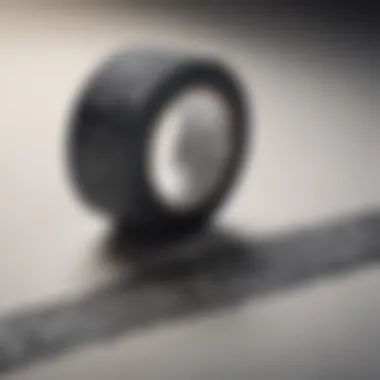

Storage Recommendations
How you store your waterproof lace tape affects its longevity. Keeping it in a proper environment ensures it remains functional for longer. Consider these tips:
- Cool and Dry Place: Store the tape away from direct sunlight and humidity. A cool, dry drawer is ideal to prevent wear from environmental factors.
- Avoid Heavy Objects: Don’t stack heavy items on top of the tape, as this can lead to deformation or compromising the adhesive layer.
- Roll Not Fold: To maintain its shape, roll the lace tape rather than folding it. Folds can create stress points that lead to tears over time.
- Keep It Wrapped: If possible, keep the tape in its original packaging or wrap it in a breathable material to protect it from dust and dirt.
Preventive Measures Against Wear
Taking extra precautions can help enhance the durability of waterproof lace tape through various means:
- Limit Exposure to Elements: Excessive exposure to rain or moisture could wear out the adhesive over time. While the tape is waterproof, less exposure means less need for replacements.
- Usage Awareness: Being mindful of where you use the tape can also elongate its life. For instance, avoid using it in high-friction areas where it may get rub against rough surfaces.
- Regular Inspections: Regularly checking your garments or accessories for any signs of damage lets you address potential issues before they escalate.
- Repair Promptly: If you notice any peeling or lifting, take action right away. Reattaching or replacing the tape at the first sign of damage can save you the headache of bigger repairs later on.
"When you give a little love and attention to your waterproof lace tape, it’ll return the favor by standing the test of time and style."
Proper maintenance for waterproof lace tape is not just about keeping it clean; it’s about ensuring a long life for a material that holds significant potential in fashion design. Understanding the intricacies of cleaning, storage, and preventative measures can help fashion enthusiasts, designers, and stylists make the most out of this versatile tool.
Future Trends in The Use of Lace Tape
The evolving landscape of fashion design is greatly influenced by innovation and sustainability. As the industry moves forward, the application of waterproof lace tape is poised to become a cornerstone in future fashion trends. This section delves into why this topic warrants attention, alongside the significant elements driving these trends, benefits for designers and consumers, and the overall impact on the fashion industry.
Sustainable Practices in Production
Sustainability isn't just a buzzword anymore; it's a global change that designers are beginning to embrace. With increased awareness of environmental issues, many brands are seeking materials that are eco-friendly yet versatile. This is where waterproof lace tape steps in. Produced from sustainable sources, the advancements in materials mean that this tape can be manufactured with lower energy consumption and reduced waste.
Consider these aspects for higher sustainability:
- Biodegradable options: There's a push for lace tape that can break down naturally, making it less harmful to the environment after disposal.
- Recycled materials: Using repurposed textiles in the production of lace tape can cut down fabric waste and promote circular fashion.
- Ethical manufacturing: Ensuring fair labor practices in the production process not only satisfies the ethical concerns of consumers but also enhances brand loyalty.
These practices not only appeal to conscientious consumers but also align with emerging regulations and standards for sustainable fashion.
Innovations in Design Applications
Waterproof lace tape isn’t just functional—it’s pushing boundaries within design itself. As designers search for unique ways to stand out, they are harnessing the inherent versatility of lace tape in unexpected manners. Here are some innovations that might be on the horizon:
- Dynamic Textiles: Lace tape can be integrated into smart textiles that react to environmental factors like moisture and temperature, creating garments that change alongside the wearer.
- Fashion Technology: Collaborations with tech companies may lead to the creation of lace materials embedded with sensors, allowing for monitoring of health metrics right from your garment.
- Customization and Print: New printing technologies are allowing lace tape to be customized in terms of color and patterns, enhancing design personalization.
Creatively, this opens the door for designers—whether they’re upstarts or seasoned professionals—to infuse their collections with unique elements that were previously hard to achieve.
Consumer Behavior and Future Demand
It's essential to understand that trends don’t emerge in a vacuum; they are a response to consumer behavior. Today’s shoppers are more discerning and perceptive than ever. They seek products that reflect their values and lifestyles. Waterproof lace tape taps into this mindset in several significant ways:
- Functionality and Durability: Customers are opting for quality over quantity. The durability that waterproof lace tape offers means consumers invest in pieces that are not only stylish but will last longer.
- Innovative Features: As functional fashion becomes trendy, shoppers are attracted to clothing that offers water resistance without compromising style. The demand for fashion that addresses modern-day concerns is growing.
- Eco-consciousness: As mentioned, with rising environmental awareness, consumers actively seek brands that are aligned with sustainability.
Investors and brands that sense this shift will likely be the ones who thrive. By understanding and anticipating future consumer demand, fashion trendsetters can ensure their relevance in a competitive market.
In summary, the future trends surrounding waterproof lace tape are not merely about the tape itself but about what it represents in a changing fashion landscape.
As designers and brands keep their fingers on the pulse of innovation, the integration of waterproof lace tape promises not only practical benefits but also serves as an exciting canvas for creativity in fashion.
Epilogue
When it comes to fashion design, understanding the evolving role of materials like waterproof lace tape is not just insightful, but essential. This article emphasizes the myriad applications of this unique product, exploring its qualities and advantages while weaving through its historical context and contemporary relevance.
The Evolving Role of Waterproof Lace Tape
Waterproof lace tape has transformed from a niche item to a staple in many designers’ toolkits. Its dual functionality—acting as both a structural component and a decorative asset—highlights its versatility. In today’s design landscape, where functionality meets fashion, the demand for materials that can withstand the tests of time and nature becomes increasingly significant.
The chic appeal of waterproof lace tape has made it popular not only for ensuring garments remain intact but also for adding intricate details that elevate an outfit’s aesthetic. Designers have found creative avenues to incorporate it into various styles, from urban streetwear to high-end couture, ensuring it caters to a broad audience. Just as a caterpillar transforms into a butterfly, waterproof lace tape has evolved to meet the needs of modern fashion consumers.
Final Thoughts on Usage and Impact
As we look toward the future, it's clear that waterproof lace tape holds the potential for even broader applications. Designers are beginning to think outside the box, integrating this tape in unexpected ways. Whether it's for waterproofing delicate fabrics or adding textural dynamics to a simple garment, the implications remain vast.
The impact of waterproof lace tape goes beyond just aesthetics; it also speaks to a growing awareness in the fashion industry regarding durability and sustainability. As consumers begin to favor long-lasting products, fashion designers must stay in tune with the materials they choose.
"In the grand design of fashion, every small detail tells a story. Waterproof lace tape is one of those subtle details that can change everything."
To sum up, the importance of waterproof lace tape in fashion design cannot be overstated. Its blend of practicality and elegance embodies the essence of what modern fashion strives to be—intelligent, aesthetic, and resilient. Moving forward, staying abreast of such innovations and their applications will be key for anyone engaged in the fashion industry.



